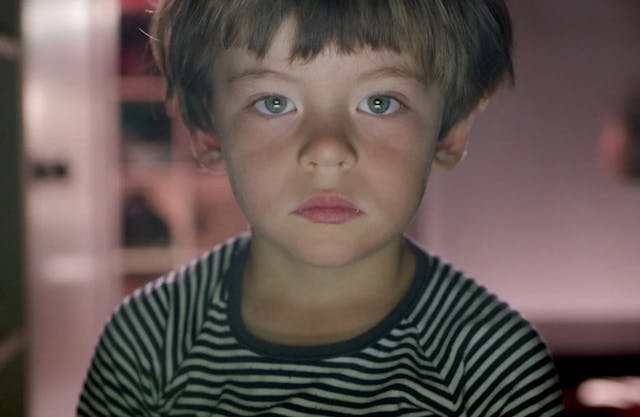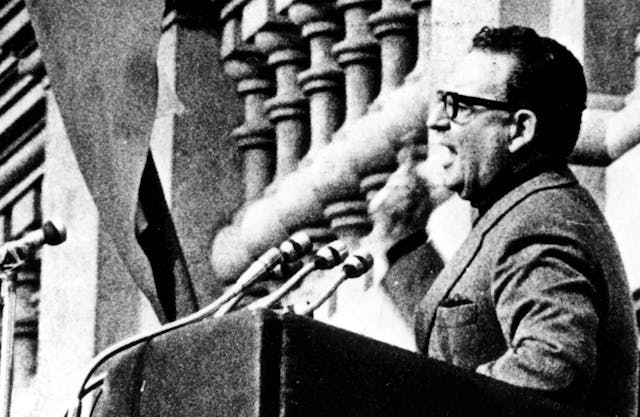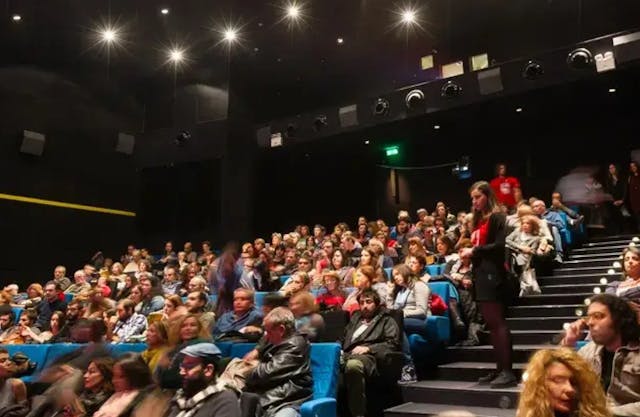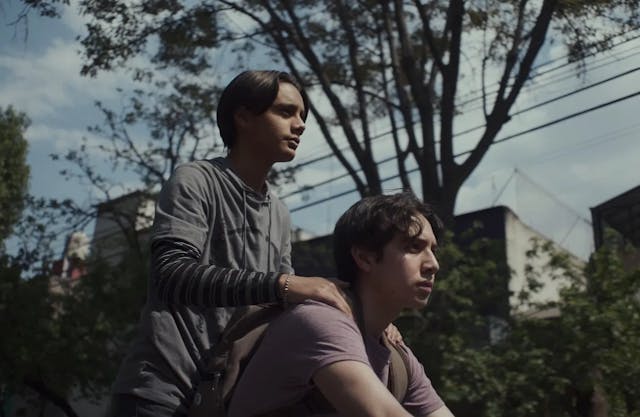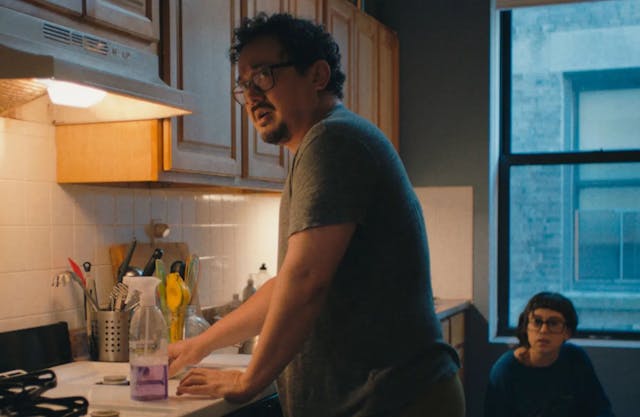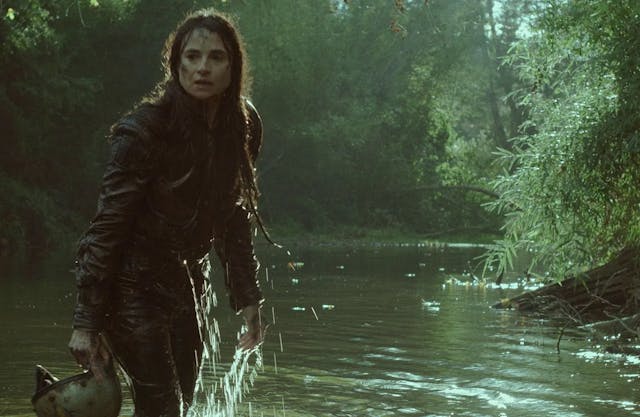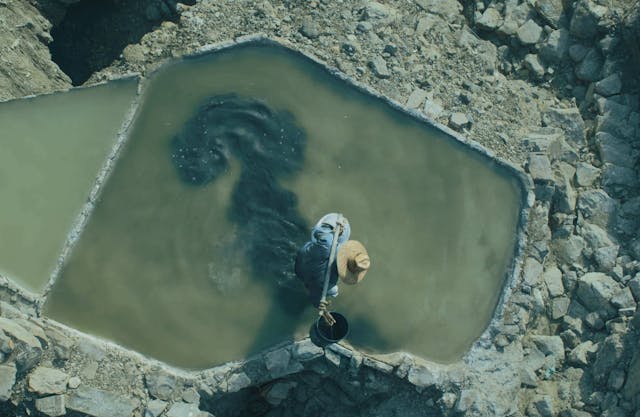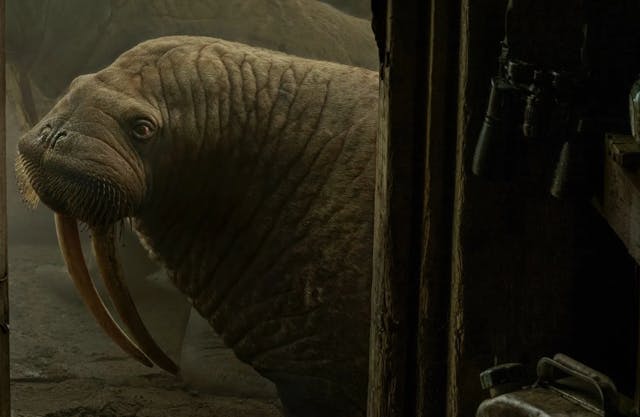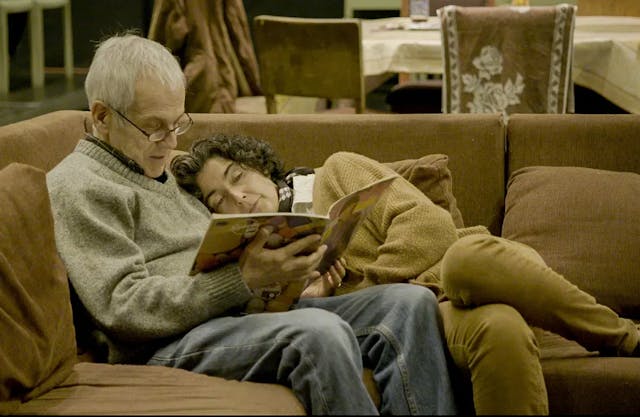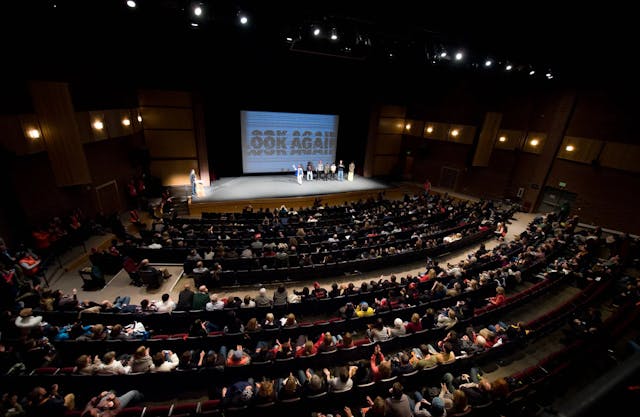Tribeca 2024: "Piropolis" and the Secret Life of Firefighters

You’ve never seen fire on the screen as portrayed in “Pirópolis.” Chilean filmmaker Nicolás Molina brings Tribeca his latest documentary, a homegrown exploration of the life of a handful of volunteer firefighters in Valparaiso. This premise may bring to mind Hollywood products like “Backdraft” (Ron Howard, 1991), and the John Travolta vehicle “Ladder 49” (Jay Russell, 2004), where the trade is mined for standard big-screen heroics. There is nothing further from Molina’s agenda than vapid entertainment. If anything, he wants to present the life of firefighters as a life as any other. And by doing so, he doesn’t shortchange it. Rather, he humanizes it.
We follow the comings and goings of Valparaiso’s “Pompe France” brigade, a corps of voluntary firefighters supported by France's diplomacy - hence the name in a Spanish-speaking country. Our main character - if we can call a real person that - is Captain Héctor Casacubertas. The veteran chief hosts the visit of a French mission of instructors led by Alain Baptista. They are training the Chilean troops in techniques to fight forest fires, which have increased in frequency and strength due to the invasive exploitation of eucalyptus for industrial purposes. Change is in the air on gender issues, with women entering the force. People take to the streets to support the political project behind a new Constitution, with government forces suppressing them violently. This synopsis might give you the idea that Chile, the country itself, is on fire, but that would be misdirection. “Piropolis” is eminently observational and immersive, dropping us into the day-to-day routine of Casacubertas and his charges.

Heart of Fire: a tree burns slowly in "Piropolis." / Photo courtesy of Cinema Tropical.
The first part of the movie follows the heartwarming bromance between the local chief and the Baptista. The most dramatic change set upon by the arrival of two women to the force is the remodeling of a small room to turn it into a shower and bathroom separated from the men’s. Even the fires we see them fight are somewhat filtered off any drama - at least until the latter part of the film. The firefighters perform practice exercises on the field and hang out on their base, cooking and chatting. Most of these scenes are stolen by the station’s dog, Copón - no, it’s not a Dalmatian, but a charming mutt.
Worthy documentarians do not manufacture drama, and Molina abides by this law. Still, he manages to register fire as a mysterious and destructive force. His camera locks in into subtle manifestations rarely staged in fictional movies - they don’t seem as dramatic as a fireball swallowing an entire building. Check out the long, long take registering the innards of a hollow tree, pulsating in red as a bizarre living organism. If anything, you can say Molina follows the contemporary tradition of slow cinema, which sacrifices mass audience engagement by committing to a haphazard, episodic structure. You get the feeling of life, but not exactly the flow.
In the final stretch, the most dramatic fire catches a shantytown on the outskirts. A frantic call for help plays on a wide shot of the city. The firefighters’ work registers on wide shots, taking advantage of ever-present smog to hide the horror, consciously avoiding leering crowds of bystanders and distraught relatives. Your imagination flies on the wings of audio: the crackling sound of burning wood, and off-hand, alarming remarks - “That’s a femur.” -. There is no further information on the event or commentary. By design, it’s just a visual and aural impression.

Balad of the anonymous firefighter: Men and women risk their lives in "Piropolis." / Photo courtesy of Cinema Tropical.
This is a convention of contemporary documentaries, but it can turn into an Achilles’ heel when the movie feels poorer because of the lack of context and background information. When “Piropolis” introduces the street protests, those who don’t follow Latin American news may be at a loss over why they are happening. The mind reels at the possibilities. Will our firefighting heroes be called to hose down the people? - spoiler alert: no, they are not. A later scene at the firehouse finds the men commenting on a newscast that clarifies things, bringing the issue of a referendum to approve a new constitution to supplant the one inherited from the Pinochet regime - check out Patricio Guzmán’s documentary “My Imaginary Country” (2022) for more on the failed political project.
In one instance, the dramatic sparseness translated into accidental comedy. During an official dinner, Baptista talks with a veteran about the changes related to the inclusion of women in the force. The exchange is perfunctory, as superficial as an over-drinks chat. “We have to adapt ourselves!, says the Frenchman. Yup!, answers the old geezer. Alright, he doesn’t say the Spanish equivalent of “Yup,” but he might as well.
Is “Piropolis” taking on too many issues to cover in its slim 1 hour and 13 minutes running time? Perhaps, but then again, the movie’s capital is not in sociological insight, but in the portraiture of a moment in time and a life dedicated to a particular kind of labor. The carefully composed images - Molina is also the movie’s cinematographer - make every moment a tableau of humanity at work, at rest, and in distress. It is the ennobling of mere existence, without the distractions of dramatic conflict and resolution.
That is not to say the movie does not follow a thought line. It’s just that you have to be attentive to the images. The women survey approvingly their cozy bathroom. The renovation is memorialized with an official portrait where their husbands join them, one holding a baby in a sly reversal of gender roles. A character facing retirement fades on board his motorcycle, into the horizon of a nighttime street. The camera crew running from the police in the protest crackdown goes nowhere - we relive the moment through the point of view of a camera pointing down to the ground while the techies run for cover -, but this dangling plot point documents another kind of dangerous job. One moment, you are lounging in bed with a dog. The next one, you are risking your life. It’s all in a day’s work. "Piropolis"' visual and aural bravado deserves a place in the Art House. Cross your finger so that it finds theatrical distribution.
Want to get an email when we publish new content?
Subscribe today

